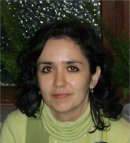|
Plenary
Lecture
Recent Challenges in Turbulence: Computational Features
of Turbulent Mixing

Associate
Professor Adela Ionescu
Department of Applied Sciences, Navigation and
Environment Protection
University of Craiova
Calugareni no1 Str, 220037 Dr.Tr.Severin
ROMANIA
E-mail:
adelajaneta@yahoo.com
Abstract: Nowadays, computational fluid dynamics (CFD)
becomes more and more mature. In the same time, it
becomes more and more difficult to contribute
fundamental research to it. The fact that commercial CFD
software is a success is proof of the practical
importance of the theoretical fluid-dynamics works since
Euler. The growing availability of CFD software may seem
to be a threat for CFD research. However, how CFD
develops remain unpredictable, and it is part of what
makes it an exciting and attractive discipline.
This paper aims to exhibit a synthesis of some recent
works in CFD. It concerns the turbulence problem in
mixing media. The mixing theory appears in an area with
far from complete solving problems: the flow kinematics.
Its methods and techniques developed the significant
relation between turbulence and chaos. The turbulence is
an important feature of dynamic systems with few freedom
degrees, the so-called “far from equilibrium systems”.
These are widespread between the models of excitable
media, and a recent goal is to find a consistent and
coherent theory to stand up that a mixing model in
excitable media leads to a far from equilibrium model.
Studying a mixing for a flow implies the analysis of
successive stretching and folding phenomena for its
particles, the influence of parameters and initial
conditions. In the previous works [1,2,3,4,5], the study
of the 3D non-periodic models exhibited a quite
complicated behavior. In agreement with experiments,
they involved some significant events - the so-called
“rare events”. The variation of parameters had a great
influence on the length and surface deformations.
The experiments were realized with a special vortex
installation [7], it was used a well-known aquatic algae
as biologic material, and the water as basic fluid. It
must be noticed that both the experimental an analytical
analysis work for any biological material.
In the paper there are presented a qualitative synthesis
analysis, with the corresponding graphical simulations,
for the periodic (2D) and non-periodic (3D) flow case.
It was used the numeric soft Maple11, with its powerful
and fast analysis and numeric tools. The statistical
cases are very few (especially in 3D case), and it is
pointed out the “rare event” new concept.
Brief Biography of the Speaker:
I am associate professor in the Department of Applied
Sciences and Environment Protection at the Faculty of
Engineering and Management of Technological Systems,
University of Craiova, Romania. I received my PhD in
Industrial Engineering, at the Department of Engineering
of Biotechnical Systems of the Polytechnic University of
Bucarest, Romania, where I spent an academic and
research stage. My research interests include
computational fluid dynamics, especially on the
turbulent mixing area, and the interface between the
fluid dynamics and computational tools, including
adequate software tools. Also optimization methods in
the differential equations modeling intelligent flows
moving in an actuator, and the interface with
magneto-hydro-dynamics are among my recent skills.
I am member of ESF (European Scientific Foundation)
database, member of IAENG (International Association of
Engineering), member of the Romanian Society of
Biotechnology, member of the Romanian Association of
Applied and Industrial Mathematics (ROMAI), and
Associate Editor of IST Transactions (IST Press,
Canada). I have published a monograph entitled
“Informational Processing of Measuring Data”. Some of my
publications (about 30) have appeared in the journal
“International Journal of Computing, Communications,
Control”.
|
